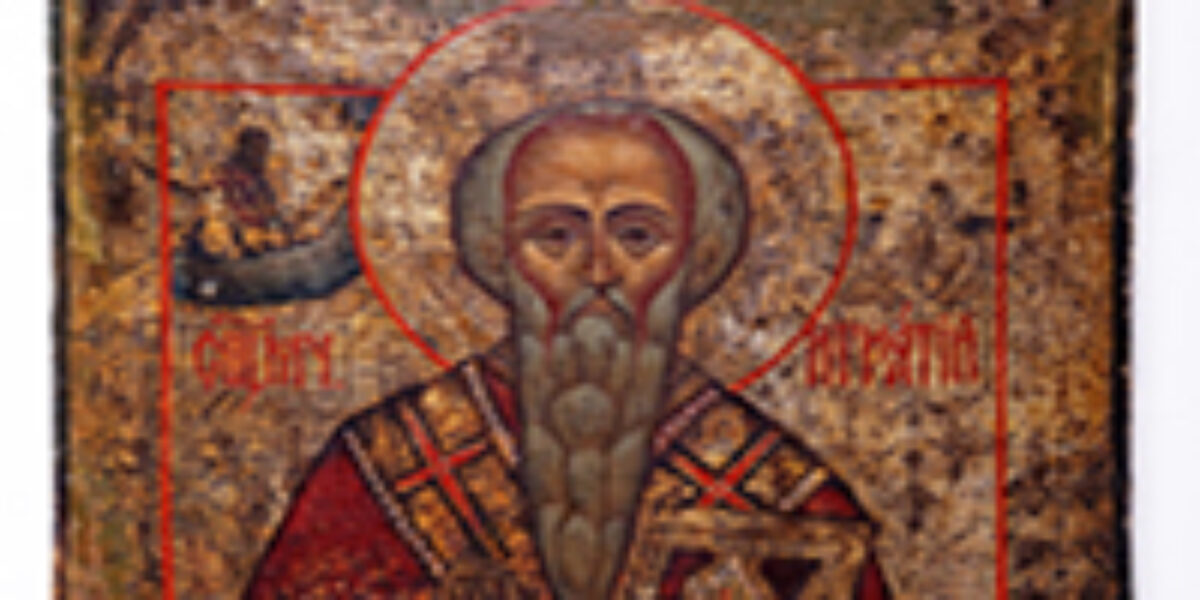Stand up for what you believe in. Ignatius of Antioch did. See how this disciple of John lived his life and contributed to the early Christian community.
Ignatius, along with Polycarp, was a disciple of John when he was in Ephesus in the latter part of the first century. This all but rules out a tradition that arose around the 10th century, referring to Ignatius of Antioch as the boy Jesus brought into the midst of his disciples, saying “If you don’t change and become like a child, you will never get into the kingdom of heaven” (Matthew 18:3, CEV). This tradition was loosely based on Ignatius’ use of the alternate name “Theophorus,” (lit. “bearer of God”) in the greetings of his letters to the churches. If nothing else, the tradition surrounding this chosen alternate name reflects the truly childlike faith of a man who not only carried God with him in his heart, but who was carried by God to the very end.
We learn of this faith in a series of seven letters that Ignatius wrote on his way to the coliseum in Rome to face execution. According to the account of his martyrdom, in the first decade or so of the second century, the Emperor Trajan threatened persecution of the churches unless the Christians agreed to worship the Roman gods as other conquered nations had done. Ignatius refused and was sent to Rome, “there to be devoured by the beasts, for the gratification of the people” (The Martyrdom of Ignatius 2). En route he seems to have been allowed a fair amount of contact with the bishops, presbyters and deacons of churches who dotted the route to Rome. He stopped in Smyrna where his fellow disciple Polycarp lived and composed letters there to the churches of Magnesia, Tralles, Ephesus and Rome. Of these four letters, the letter to the Romans is the most vocal in imploring the Roman Christians—who would be seeing him soon enough—not to prevent his martyrdom and thus deprive him of his “opportunity to reach God … as an offering to God while there is still an altar ready” (Epistle to the Romans 2). From Smyrna, the captive Ignatius sailed on to Troas where he sent a letter to the congregation he had just visited in Smyrna, and to their bishop Polycarp, along with a letter to the church in Philadelphia. He then proceeded to Rome where the martyrdom he sought was granted in 116 A.D. as he became “God’s wheat … ground by the teeth of the wild beasts [into] pure bread” (Epistle to the Romans 4).
Along with their portrayal of one of the early martyrs of the Church, these letters provide a glimpse into how vulnerable the Church was in the early second century. Ignatius knew his own church in Antioch was at risk in his absence. He could only assume that the persecution which had claimed him might come after other members of the church, or that the church might fragment into factions without their Bishop. The theme of division and unity is a constant emphasis in his letters. The unity he urges centers around the Bishop and his authority. Ignatius considered the faithful Bishop to be Christ’s representative on earth. Such authority was important in the face of internal problems the church was facing with false teachers who were departing from the essential truth of Christianity (For more on the topic of Apostolic Succession, see article on Clement of Rome). Some, known as Docetists, were already denying that Jesus was truly human, teaching that he only seemed so. Ignatius viewed this as a direct attack on the faith. If Christ only seemed to suffer, then our salvation was based on a lie. Ignatius was not into appearances. As he said in his Letter to the Romans 3, “Pray … that I might not merely be called a Christian, but actually proved to be one. Because if I prove to be a Christian, then I can also be called one.”




